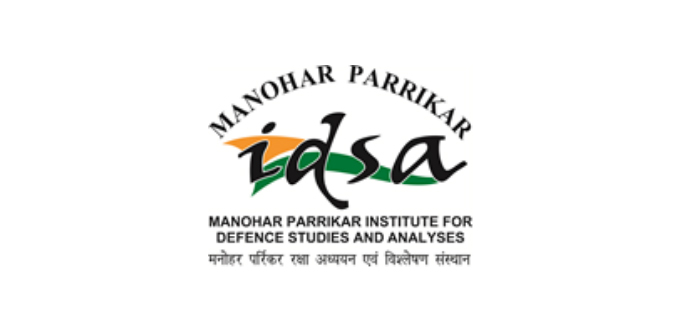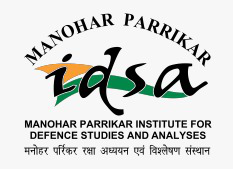
- This event has passed.
Report of the Monday Morning Meeting on “Nepal – The Making of an Inclusive Constitution: Demands, Debates, Dissents”

Dr. Nihar Ranjan Nayak, Research Fellow at the Manohar Parrikar Institute for Defence Studies and Analyses (MP-IDSA), presented his book Nepal – The Making of an Inclusive Constitution: Demands, Debates, Dissents, Pentagon Press LLP, 2025 during the Monday Morning Meeting held on 04 August 2025. The session was moderated by Ms. Sneha M, Research Analyst, MP-IDSA, and Dr. Ashok K. Behuria, Senior Fellow, MP-IDSA, served as the Discussant. Ambassador Sujan R. Chinoy, Director General, MP-IDSA and scholars of the Institute attended the meeting.
Executive Summary
Despite the conclusion of a protracted political transition, the 2015 Nepalese Constitution was criticised for failing to achieve true inclusivity. Using his book as a guide, Dr. Nayak examined the development of Nepal’s Constitution, the ongoing marginalisation of groups like the Madhesis and Janajatis, and the interaction between internal politics and external forces. The presentation evaluated the nature and objectives of different socio-political movements, the difficulties in integrating ethnic diversity, and the structural flaws in the constitution-drafting process. It also assessed the geopolitical ramifications of Nepal’s constitutional discussions and the Maoist movement’s calculated outreach to underprivileged groups. The development of new dissident groups, the partial success of Nepal’s peace process, and the necessity of ongoing communication and inclusive governance to ensure long-term political stability, were reflected upon.
Detailed Report
Dr. Nayak began his presentation by describing the political history of Nepal’s transition to a Federal Democratic Republic, highlighting the seven-year process that resulted in the adoption of the 2015 Constitution and the election of the country’s second Constituent Assembly (CA-II). He acknowledged the important political turning points but maintained that the constitution was not truly inclusive, especially when it came to meeting the demands of historically marginalised groups like Janajatis and the Madhesis. Based on his in-depth research, Dr. Nayak clarified that the movements spearheaded by these communities were centred on calls for federal restructuring, cultural recognition, and proportional representation. He pointed out that during the civil war, the Maoist movement had strategically allied itself with these organisations, only to weaken its pledges once it entered the political mainstream.
The Speaker also delved into Nepal’s constitutional history, pointing out the discriminatory clauses in previous versions and highlighting four significant movements that influenced the call for inclusivity: the Janajati movement, the pro-democratic movement of Nepali Congress, the Maoist movement, and the Madhesi movement. He made it clear that his research does not address the six constitutions that came before it, but only the 2015 Constitution, its framework, and the controversy surrounding its adoption. Press releases, media reports, stakeholder interviews, and other primary and secondary sources are all incorporated into the book’s exploratory methodology.
The role of external actors was specifically highlighted. China’s measured involvement, the United States (US), the European Union’s (EU) stances and India’s influence—shaped by proximity, shared history, and political engagement—were all discussed. The Speaker maintained that Nepal’s constitutional process was directly impacted by changes in the Indian Government in New Delhi, particularly when it came to discussions on ethnic- federalism. He pointed out that a significant flaw, which led to delays and deep-seated divisions, was the lack of a reliable formal mediator during the drafting process. As presented by the Speaker, the book’s thematic chapters explore the development of the Janajati and Madhesi movements, the ethno-regional context of state discrimination, the co-optation of marginalised leaders by dominant parties, and the intricate relationship between identity politics and Maoist political tactics. It was highlighted that the process of drafting the constitution changed from reaching consensus to being a competitive process, leading to a framework that left several grievances unresolved.
While concluding his presentation, Dr. Nayak stated that although Nepal’s peace process has made some progress, important promises made in the Comprehensive Peace Agreement of 2006 have not been met. One possible destabilising factor was the resurgence of royalist organisations and other dissident forces. He concluded the session by urging continued political discourse, inclusive governance and cautious handling of regional and ethnic ambitions in order to ensure the legitimacy and longevity of the constitution.
Discussant’s Remarks
Dr. Ashok K. Behuria, Senior Fellow, MP-IDSA, and Discussant, began by highlighting Nepal’s complicated demographic makeup, pointing out that the Janajatis and Paharis (hill upper caste groups) together make up almost 60 percent of the population and have long-standing political and economic power under the country’s constitution. He emphasised that genuine inclusivity is still elusive in Nepal despite its federal structure, which consists of seven provinces, 75 districts, and several levels of government. Local governments only receive 25 percent of the national budget and 50 percent of tax revenues, which restricts their ability to adequately meet local needs. In order to clarify how marginalised communities in Nepal frequently experience exacerbated disadvantages as a result of overlapping ethnic, regional and caste identities, Dr. Behuria expounded on the idea of intersectionality. He noted that although progressive concepts like intersectionality have been introduced by Nepal’s thriving intellectual community, ruling elites frequently split these communities apart in order to keep political power. He also mentioned how Janajati leaders have frequently been co-opted into the political mainstream due to the influence of foreign organisations and political players.
Later in the conversation, Dr. Behuria also highlighted the need for more targeted studies on the effectiveness of Nepal’s federal system and the integration of marginal demands into governing frameworks. He emphasised that in order to guarantee accountability and effectiveness in governance, ideas like the subsidiary principle—where decisions are made at the lowest competent level—are essential.
Questions and Comments
Ambassador Sujan R. Chinoy, Director General, MP-IDSA, commended Dr. Nayak for his research and recommended that a comparative study between India and Nepal be included in subsequent editions of the work. He emphasised the connections between the Maoist movements in the two nations and pointed out that Nepal could learn a lot from India’s experience with inclusive development and decentralisation. Additionally, Ambassador Chinoy noted that the two countries have structural parallels in caste, religion, and colonial legacies, which make them ideal subjects for comparative political analysis.
A research scholar in the audience asked how India’s military capabilities and bilateral relations with Nepal might be affected by the Indian Army’s decision to stop recruiting Gurkhas after the Agniveer scheme was implemented. In response, Dr. Nayak pointed out that the Indian Army’s decision to stop hiring Gurkhas under the Agniveer program might have diplomatic and military ramifications. He emphasised that the Maoists in Nepal have long opposed Gurkha enlistment, seeing it as exploitative, and have included it in their 40-point demand since 1996. Especially during previous conflicts like the Kargil War, when the deployment of Gurkha regiments sparked political debates in Kathmandu, this opposition has fuelled anti-India sentiment in Nepal. Such actions could strain bilateral relations, Dr. Nayak continued, particularly given that India’s political engagement with various Nepali factions has frequently been uneven and occasionally seems to favour the Maoists over other parties like the Nepali Congress.
Given the administrative and economic difficulties federalism seems to be facing, another research scholar posed a crucial question: is there a genuine chance for Nepal to further decentralise within its current federal system, or would the nation be better off returning to a unitary structure? In response, Dr. Nayak stated that although the Nepalese federal system has a number of operational issues, going back to a unitary structure is neither practical nor wise. In order to meet the needs of Nepal’s diverse and historically marginalised communities, he emphasised that federalism was a difficult political compromise. He maintained that in order to increase the effectiveness of federalism, the emphasis should be on enhancing institutional capacity and true devolution of power rather than repealing it.
As the session came to an end, Dr. Nayak emphasised that the Constitution of Nepal should not be viewed as a mere textual document but rather as a dynamic political tool that must change to reflect the will of the people. He emphasised that the ability of the Constitution to address the issues of all citizens, particularly the marginalised, is its true test. In light of Nepal’s complicated and frequently unstable political environment, he emphasised the significance of inclusive governance and true implementation in order to guarantee that the Constitution acts as a responsive and unifying framework for the nation’s future.
Report was prepared by Ms. Saanya Sidhra, Intern,, South Asia Centre, MP-IDSA.




